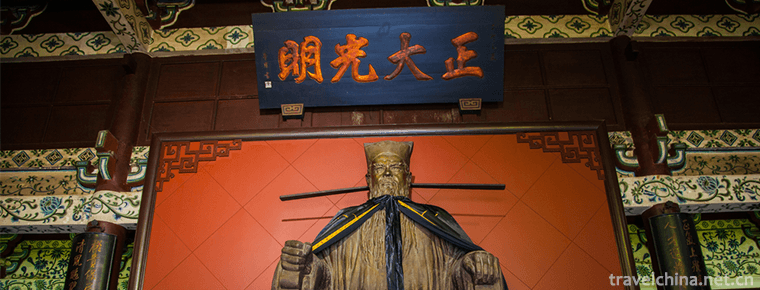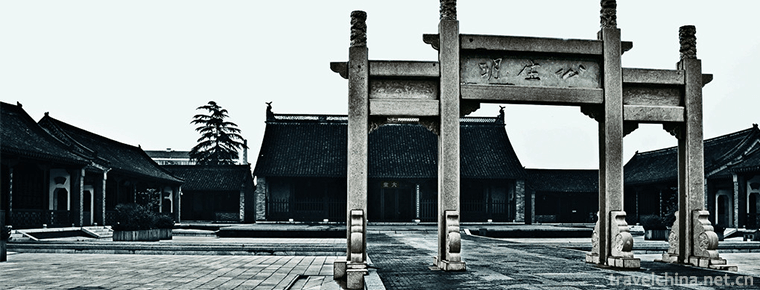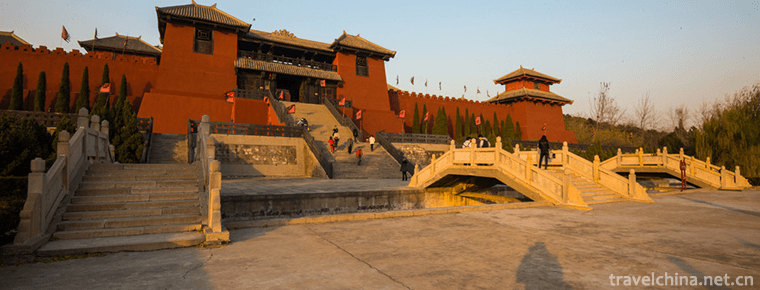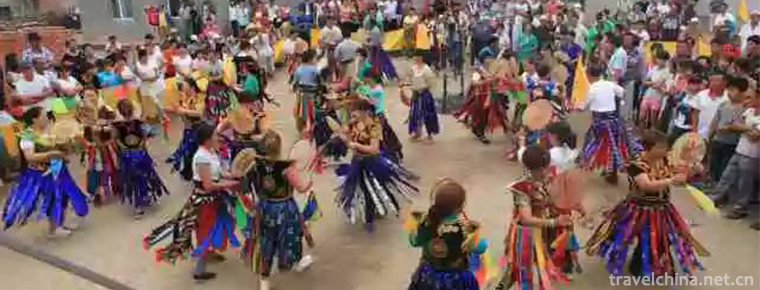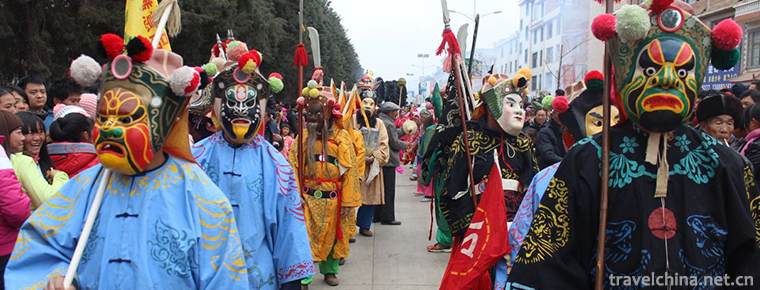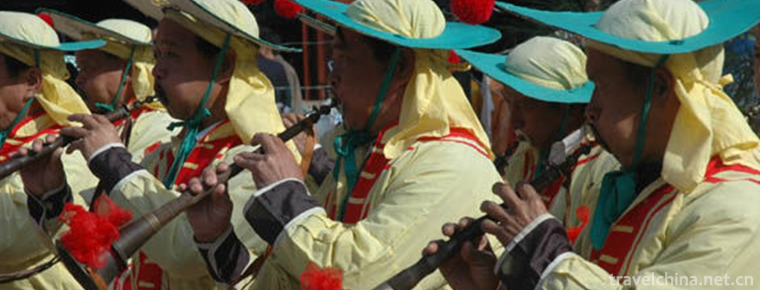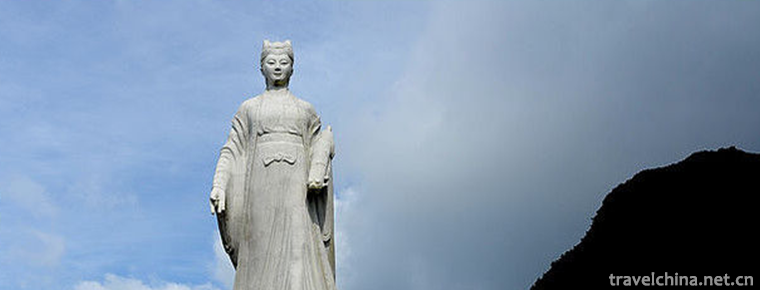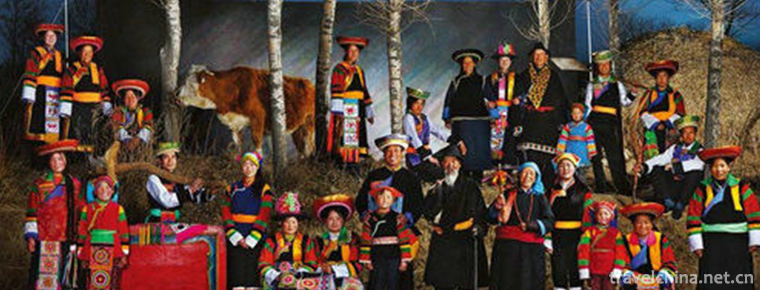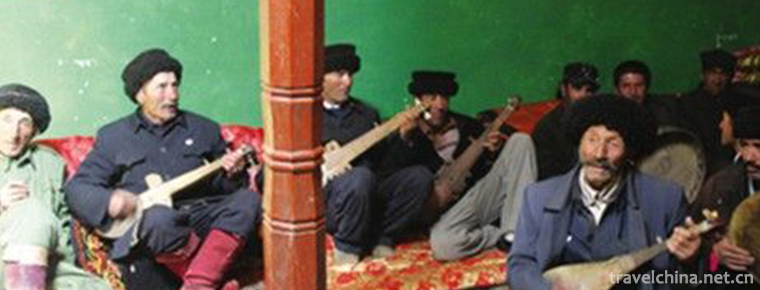wolong national nature reserve
wolong national nature reserve
The synonym Wolong Nature Reserve generally refers to Wolong National Nature Reserve
Wolong Nature Reserve is located in the southwest of Wenchuan County, Aba Tibetan and Qiang Autonomous Prefecture, Sichuan Province, on the southeast slope of Qionglai mountains, 130 kilometers away from Chengdu, the capital of Sichuan Province, with convenient transportation. After the Wenchuan earthquake, the counterpart of the Hong Kong Special Administrative Region (HKSAR) supported the construction of Wolong Nature Reserve.
Wolong Nature Reserve is the third National Nature Reserve. Sichuan Province is the largest nature reserve with the most complex natural conditions and the largest number of rare animals and plants. Across Wolong and Gengda townships, the reserve is 52 kilometers long from east to west and 62 kilometers wide from north to south, covering a total area of about 700000 hectares. It mainly protects the natural ecosystem and rare animals such as giant panda in southwest high mountain forest area.
In July 2018, leopard first appeared in Wolong National Nature Reserve of "panda kingdom".
Historical evolution
In 1963, a nature reserve was established. It covers an area of 200000 hectares.
In January 1980, Wolong Nature Reserve of Sichuan Province joined the UNESCO Man and Biosphere Reserve (mabreserve) and cooperated with WWF to establish the China Research Center for giant panda conservation.
In 1983, he joined the international man and biosphere program. The main protected objects are giant panda and other rare animals and forest ecosystem.
In March 1983, with the approval of the State Council, Wolong and Gengda communes in Wenchuan County of Wolong Nature Reserve were designated as Wolong Special Administrative Region of Wenchuan County, under the dual leadership system of ministry and province, and managed by the forestry department. In July, the provincial government and the former Ministry of forestry jointly decided to change the Wolong Special Administrative Region of Wenchuan County into the Wolong Special Administrative Region of Wenchuan County, Sichuan Province However, the comprehensive management system of the joint office of the Reserve Management Bureau.
On May 12, 2008, Wolong National Nature Reserve, less than 20 kilometers from the epicenter of the Wenchuan earthquake, suffered unprecedented losses. Hong Kong has undertaken 23 aid projects in Wolong Nature Reserve, including 11 ecological conservation projects and 12 livelihood infrastructure projects. Moreover, the remaining 190 million yuan is also used to optimize the Wolong project. In June, the Hong Kong Special Administrative Region proposed the intention to build Wolong National Nature Reserve. In October of that year, the two sides officially signed a reconstruction cooperation agreement, with a total aid fund of 1.422 billion yuan.
In 2009, with the help of Hong Kong experts, the master plan of Wolong National Nature Reserve (2008-2020) was officially completed.
geographical environment
geographical position
Wolong Nature Reserve is located in the western edge of Sichuan Basin, Southeast Slope of Qionglai mountains, Southeast of Aba Tibetan and Qiang Autonomous Prefecture of Sichuan Province, west of Yingxiu town of Wenchuan County, upstream of Minjiang River, and high mountain and deep valley zone from Chengdu plain to Qinghai Tibet Plateau. It is 102 ° 52 '- 103 ° 25' e, 30 ° 45 '- 31 ° 25' n, 60 km wide from east to west, and 63 km long from south to north. It is connected with Yingxiu town of Wenchuan County in the East, Baoxing and Xiaojin County in the west, Dayi and Lushan counties in the south, Lixian County and Caopo township of Wenchuan County in the north.
geological structure
Wolong area is located in the south central section of Longmen Mountain and the southeast slope of Qionglai mountain. It is the transition zone from Sichuan basin to Western Sichuan Plateau. Its landform is mainly high mountains and deep valleys. Siguniang mountain, the highest peak in the region, is the main peak of Qionglai mountain, with an altitude of 6250 meters. It is bounded by Siguniang mountain and balang mountain, with Sichuan basin marginal mountain in the East and Western Sichuan Plateau in the West.
1. Structural pattern
Wolong area belongs to the middle and south segment of Longmenshan fold fault zone, which is composed of a series of NE parallel folds and faults. The overall direction of the structural belt is 40-50 degrees north-east. From northwest to Southeast, there are: zongshanzi anticline, sandaojia anticline, Niutoushan anticline and Tongcao anticline. The axial direction of these folds is 30-60 ° e. the axial tendency of these folds varies greatly in different sections, sometimes to the northwest and sometimes to the southeast, showing a curved twisted surface with an inclination of 40 - 60 degrees. Both wings of the anticline and syncline are complicated by minor anticlines and synclines with the same trend.
From northwest to Southeast, there are pitiaohe fault zone, Gengda fault zone and Yingxiu fault zone. The main fault has a tendency of 300-330 degrees in the north and a dip angle of 50-60 degrees in the West. At the same time, a group of tensile faults perpendicular to the main fault zone and torsional faults oblique to the main fault zone are developed.
These faults and folds basically control the geomorphic pattern of Wolong area
2. Strata
The pre Paleozoic to Mesozoic Triassic strata are well developed in Wolong area, and the Mesozoic Jurassic, Cretaceous and Cenozoic Tertiary strata are missing. The distribution of the strata is roughly bounded by the Pitiao River, the Paleozoic strata in the southeast and the Triassic strata in the northwest.
The metamorphic clastic rocks of the Silurian Maoxian group are widely exposed in the southeastern part of the country. The lithology is grayish green sericite phyllite, silver gray sandy phyllite with thin quartzite and thin and lenticular crystalline limestone. Devonian and Carboniferous Permian strata are distributed in the belt near the Pidiao river. The former is the gray and dark gray thin bedded limestone with argillaceous limestone intercalated with carbonaceous face and sandstone; the latter is medium thick layered limestone with phyllite, carbonaceous phyllite and crystalline limestone with glutenite. In Sanjiangkou area, gray medium thick layer feldspathic quartz sandstone, quartz sandstone and sandy slate are scattered.
Triassic strata are widely distributed in Northwest China, with lithology of feldspathic quartz sandstone, slate, carbonaceous phyllite, thin limestone and fine siltstone. Devonian strata are exposed in the anticline axis. The lithology is carbonaceous phyllite, sandy phyllite intercalated with quartzite and clastic limestone. A small amount of Carboniferous Permian strata are distributed in Dengsheng area. The lithology is mainly composed of carbonaceous phyllite and crystalline limestone It is mainly intercalated with sandstone.
The Quaternary loose deposits mainly include fluvial deposits, debris flow deposits and moraines. The fluvial deposits are mainly distributed in the river valley and its tributaries. There are a lot of debris flow deposits at the mouth of huahongshu gully, Longyan gully and daweijia gully. Ancient moraines are distributed in the ancient glacial valleys in xiangyangping area and the upper reaches of Zhenghe River in the upper reaches of the Pidiao River, while modern moraines are developed in modern glacial valleys.
In addition, Chengjiang Jinning diorite and granodiorite are widely distributed in Northeast Wolong area. There are Yanshanian granite outcropping in the western Siguniangshan area.
Geomorphic features
Topography: the large landform of Wolong Nature Reserve originally belongs to the mountainous area on the western edge of Sichuan Basin and is located at the southeast foot of northern Qionglai. The whole terrain decreases from northwest to Southeast. The Pitiao river divides the protection into two parts from southwest to northeast of the reserve. The northwest of the river has large peaks and deep valleys, and most of the peaks are over 4000 meters above sea level. In the northwest edge, along the balang mountain to the Siguniang mountain, and in the northern border with Lixian mountain, the altitude is about 5000 meters, forming a natural barrier. There are nearly 100 peaks with a height of more than 5000 meters. Siguniang mountain, the highest peak in Sichuan Province, is 6250 meters high. It is the second highest peak in Sichuan Province. The southeast of the Pitiao river is relatively gentle. Except for some peaks, the altitude is generally no more than 4000 meters. The sea level of most areas of Zhonghe and Xihe basins in the southeast is below 2000 meters, and Mujiangping in the East is the lowest, only 1150 meters.
Valley morphology: affected by topography, the rivers in the reserve flow from northwest to Southeast. The river valleys of the main rivers, such as the Pitiao River and Gengda River, are developed along the compressional fault zone. The bedrock on both banks is loose and easy to be eroded. The valley is continuously widened to form a broad valley, and five terraces are often developed. Some of its tributaries, such as yingxionggou and Yinchanggou, are vertically cut down along the tensile fault, and the bedrock on both sides is steep and forms a canyon. In the upper valley above 3000 meters above sea level, it develops along the glacier Valley, and the upper part forms a "U" shaped Valley, while the lower part is cut by river dissolution to form a "V" shaped Valley, which is combined into a "}" shaped valley. On the hillsides and hillsides above the main river valleys in the region, there are four levels of denudation planation surfaces, with altitudes of 2000-2200 m, 2400-2500 m, 2800-2850 m and 3000-3100 m, respectively. Although the area of these eroded surfaces is small, the terrain is gentle, and there are thick weathered residual slope deposits. The surface layer is yellow brown silty thick soil layer, and the bamboo forest grows densely, forming most giant pandas The core area of the activity.
Mountain form: the mountain area below 4000 meters above sea level in the Reserve belongs to the middle and low mountain of flowing water. Due to the influence of lithology, the mountain form is changeable. It is composed of crystalline limestone, which is shaped like a peak forest; it is composed of sandstone proton slate, which forms a typical comb mountain; the ridge is zigzag and looks like the back of a dragon, so Wolong is named after it. The mountains with an altitude of 4000-5000 meters are high mountains of freezing and weathering, with exposed batholith and many cliffs. The lower part of the mountain forms debris slopes or rock falls, and there are traces of ancient glaciers. The ancient ice bucket is also divided into four levels: 4000-4200 meters, 4350-4450 meters, 4500-4540 meters and 4620-4660 meters, respectively. After the glaciers retreated in some areas, the water in the ice cirque formed lakes and formed Haizi. The mountains with an altitude of more than 5000 meters are extremely high mountains covered with ice and snow all the year round and strongly affected by modern glaciers. The main peaks of Siguniang mountain, daguniang mountain, erguniang mountain and sanguniang mountain are pyramid shaped angular peaks, standing firmly on the northwest edge of the reserve.
River system
The water system of Wolong Nature Reserve is relatively independent. All the main rivers and their tributaries originate from the reserve and branch in the form of tree branches, and flow out of the reserve from west to East. The Pitiao river originates from the eastern foot of balang mountain and passes through the central area of the reserve from southwest to northeast. It is about 60km. Near the river, located in Beixun of the reserve, originates from the east slope of Siguniang, with a total length of about 45km. It joins the Pitiao river at the mouth of Mozigou, which is called Gengda River (also known as Yuzixi). It is 34 km long and 22 km long. Zhonghe is located in the southeast of the reserve, originated from qitouyan and Niutoushan, with a total length of about 30 km. Xihe River is located in the south of the nature reserve. It originates from Ma'anshan and has a total length of about 37 km. After the confluence of Sanjiangkou and Zhonghe River, Xihe River is called Junjiang River (also known as Shouxi River) and flows into Minjiang River at Xuankou. The river water in this area is mainly supplied by precipitation, forest water storage and ice snow melting water. There is a long flow all the year round.
Climate type
Wolong Nature Reserve is located in the eastern edge of the Qinghai Tibet Plateau climate zone. Due to its geographical location and topography, a typical subtropical inland mountain climate has been formed. The South Branch of the westerly jet and the southeast monsoon control the main weather processes in the area. In the winter half year (from November to April of the following year), under the influence of the South Branch of the dry and cold westerly jet, the weather is sunny and dry, and it passes through the cold air flow During the process, it often forms snow or rain. The humid southeast monsoon in summer and half a year goes up the river and meets the cold air flow of high mountains to form abundant rainfall on the upstream slope, so it is warm and humid. With the increase of altitude, from the valley to the top of the mountain, there are different vertical climatic zones, such as subtropical (below 2000 m), temperate (2000-2600 m), cold temperate (2600-3600 m), frigid zone (3600-4400 m), Alpine (4400-5000 m), and extremely alpine cold frozen ice and snow zone (above 5000 m). According to the observation data of Shawan meteorological station (1920 meters above sea level), the annual average relative humidity in this area is 80.3%, 75.5% in winter half year (from November to April next year), 84.8% in summer half year (May to October), 180-200 days of frost free period, average annual temperature of 8.5 ± 0.5 ℃ and average temperature of 17.5 ℃ in July 1 ± 0.8 ℃, average temperature in January - 0.9 ± 2 ℃, annual sunshine 950 ± 100 hours, annual precipitation 890 ± 100 mm.
Soil type
The soil development conditions of Wolong Nature Reserve are changeable. Affected by the vertical changes of climate and vegetation, various soil types from subtropical to periglacial environment are formed from the valley to the top of the mountain.
1. Mountain yellow soil: developed under the subtropical evergreen broad-leaved forest, distributed at an altitude of 1150-1600 meters, the parent material of soil is sandstone and quartz sandstone, the organic matter content is 15-20%, pH is 5.8-6.5, the cation exchange is mainly Ca and Mg, the exchange capacity is 40-50 mg equivalent / 100 g soil, and the thickness of litter on the soil surface is 3-6cm.
2. Mountain yellow brown soil: it is developed in the mixed forest of evergreen deciduous broad-leaved, with an altitude of 1600-2000 meters. The parent soil is sandstone, phyllite and quartz sandstone, with organic matter content of 10%, pH of 5.8-6.5, cation exchange mainly Ca and Mg, exchange amount of 20-50 mg equivalent / 100g soil, and the thickness of litter on the surface of soil is 10 cm.
3. Montane brown soil: developed in the secondary broad-leaved forest and coniferous broad-leaved mixed forest, distributed at an altitude of 1900-2300 meters, the parent material of soil is sand slate, phyllite, quartz sand blockhouse, organic matter content is 2-8%, pH is 6-6.5, cation exchange is mainly Ca, Mg, Na, exchange capacity is 20-40 MGE / 100g soil, litter thickness is 10-15cm.
4. Mountain dark brown soil: developed under coniferous and broad-leaved forest and coniferous broad-leaved mixed forest, distributed at an altitude of 2100-2600m, the parent material of soil is phyllite, sandstone and slate, the soil organic matter content is 5-15%, the pH is 5.2-5.7, the cation exchange is mainly Ca, Mg, Na, Pb, the exchange capacity is 15-20 MGE / 100g soil, the surface litter layer thickness is up to 20cm.
5. Mountain brown dark coniferous forest soil: developed under coniferous forest, distributed at an altitude of 2600-3600m, its parent material is sandstone, slate and phyllite, organic matter content is 8-24%, pH is 4-6.0, cation exchange is mainly Ca, Mg, Na, Pb, exchange capacity is 10-40 MGE / 100g soil, surface litter layer thickness is about 25cm.
6. Five Alpine Meadow Soil: developed under the cold resistant shrub and alpine meadow vegetation zone, distributed at an altitude of 3600-3900m, the parent material of soil is sandstone, phyllite and quartz sandstone, the organic matter content is about 18%, the pH is 5.7-6.1, the cation exchange is mainly Ca, Mg, Na, the exchange capacity is 32 MGE / 100g soil, and the gravel content in the soil is about 70%.
7. Alpine meadow soil: developed under alpine meadow vegetation belt, distributed at an altitude of 3900-4400m, the parent material of soil is sandstone, phyllite and quartz sandstone, the soil organic matter content is about 19%, pH is 5.8-6.3, cation exchange is mainly Ca, Mg, Na, exchange capacity is 10-39 MGE / 100g soil, gravel content in the soil is more than 70%.
8. Alpine cold desert soil: it is developed under the sparse vegetation belt of mountain liushitan, distributed at an altitude of 4400-5000 meters. The parent materials of soil are sandstone, phyllite and quartz sandstone. The organic matter content of soil is 1-3%, pH is 6.8-7.0. Cation exchange is mainly K and Ca, and the gravel content in the soil is more than 80%.
natural resources
plant resources
The forest coverage area of Wolong Nature Reserve is 118000 hectares, accounting for 56.7% of the total area of the reserve. The coverage area of shrub meadow is about 30400 hectares. The complex and changeable natural conditions cause the diversity of plant species and communities.
Natural vegetation: the flora of Wolong Nature Reserve has an ancient origin, with many endemic species and offspring plants. According to the composition of plant species and the appearance of vegetation, the vegetation in Wolong can be divided into six types as follows:
(1) Evergreen broad-leaved forest: it is distributed in the area below 1600 meters above sea level, and the main species of construction group are Lauraceae, beech family, Camellia family and Ilex family. There are a small number of deciduous broad-leaved trees of Betula, Aceraceae and Juglans in the forest, and there are large areas of Phyllostachys Nidularia, Fargesia angustissima and Fargesia arebusta under the forest. The vegetation appearance is evergreen all the year round, and the seasonal change is not obvious.
(2) Evergreen deciduous broad-leaved mixed forest: it is distributed in 1600-2000 meters above sea level. Among the established species, the evergreen species include beech family, Lauraceae, birch family, walnut family, Aceraceae, etc. in some areas, there are Cercidiphyllum japonicum, Davidia involucrata, Tetracentron sinensis, EUPTELEA PLEIOSPERMUM, etc Rare ancient relic plants are associated with the forest. The understory is dominated by Callistemon Bambusa. The appearance of the vegetation changes significantly in seasons. In spring and summer, dark green and light green alternate. In autumn, green, yellow, red, brown and other colors are mixed. In winter, only a small amount of green in the canopy intersperses in the white world.
(3) Coniferous and broad-leaved mixed forest: it is distributed at the altitude of 2000-2600m. Among the established species, the broad-leaved species include betulalbo sinensis, acerspp., Corylus forox, Tilia chinensis, etc., and the coniferous trees include Tsuga spp., Picea brachytyla, larixmastersiana and pine, etc., which are widely under the forest In some areas, there are Yushania chungii and Bashania FANGIANA. The vegetation appearance changes significantly in seasons. It is emerald green in spring and summer, and colorful in late autumn and early winter, forming a major landscape in Wolong Nature Reserve.
(4) Cold temperate coniferous forest: it is distributed in 2600-3600m above sea level. There are several species of coniferous forest, such as Abies spp., Sabina altuaria and Sequoia chinensis. Under the forest, there are large areas of Fargesia FRIGIDA, accounting for 50% of the total bamboo area in the region. In some areas, there are fargesianifida and fargesianifida. The vegetation appearance is dark green and the seasonal change is not obvious.
(8) Cold resistant shrubs and alpine meadows: distributed at an altitude of 3600-4400m, the cold resistant shrubs are mainly Rhododendron violaceum, Salix dissa, Spiraea myrtlloides, Potentilla glabra and sabinapingil. The alpine meadows are dominated by Polygonum viviparum and Festuca Arum (festucaovina) is the main grass meadow, and the sedge meadow is dominated by Kobresia amullis. In summer, a hundred flowers bloom and the scenery is pleasant.
(6) Sparse vegetation belt in liushitan mountain: it is distributed in 4400-5000m above sea level and mainly consists of short hairy and fleshy herbs, such as Saussurea spp., Saxifraga spp., rhodiolaspp., arenaria spp., Andrea acespp., and a small amount of lichens and bryophytes.
Animal resources
There are more than 50 kinds of mammals, more than 300 kinds of birds, and a large number of reptiles, amphibians and insects. The distribution of giant pandas in the area accounts for about one tenth of the total, known as "the hometown of giant pandas". In addition to giant pandas, there are leopard, golden monkey, takin, white lipped deer, little panda, snow leopard, water deer, macaque, macaque, red bellied pheasant, Tibetan pheasant, stone mink, big Lingmao, kitten cat, lynx, forest musk deer, Mao Guan deer, Golden Eagle, Tibetan snow chicken, blood pheasant and other rare wild animals. There are many kinds of birds, accounting for 50% of the special birds in China. It is one of the most well preserved ancient species in the world. These animals mainly live in warm and cool coniferous broad-leaved mixed forest and arrow bamboo forest zone between 2200 and 3600 meters.
Animal community: the composition of fauna in Wolong Nature Reserve, with the increase of Haiyou, the composition of Oriental realm gradually decreases, while that of Palaearctic realm increases gradually. According to various natural factors and fauna and species composition of animals in Wolong Nature Reserve, the geographical distribution of animals can be divided into the following five groups:
(1) Jiashi fauna in the south of subtropics: it is distributed in the evergreen broad-leaved forest and mixed evergreen deciduous broad-leaved forest belt with an altitude of 1150-2000 meters. The floristic composition is mainly Oriental species, with a small number of Palaearctic species and widespread species. The ecological geographical animal community is composed of subtropical broad-leaved forest and forest shrub fauna in seasonal negative area. The semi arboreal species are clouded leopard, macaque in warm temperate zone, Tibetan macaque in middle subtropical zone, Caragana rubra in subtropical zone, widely distributed kite, sparrow hawk, red footed falcon, collar bunting, spotted bunting and other raptors in the paleoarctic. Forest and shrub animals include leopard and yellow throated marten in monsoon area, golden cat in North subtropics, big and small civet in middle subtropics and South Asia Jackal and deer of the tropics. There are otters that feed on fish, mandarin ducks of swimming birds and rare and ferocious fish, zhelao fish of Sichuan and Shaanxi.
(2) Temperate north-south fauna: distributed in the coniferous broad-leaved mixed forest belt with an altitude of 2000-2600m. Compared with the upper zone, the Oriental species began to decrease, while the Palaearctic species increased in the monsoon area. The eco geographical animal community was composed of temperate coniferous broad-leaved mixed forest and shrub fauna. The arboreal species included the golden monkey, an ancient animal endemic to southwest China. Besides the widely distributed species such as golden eagle and kite, raptors were mainly Palaearctic species, such as sparrow hawk, songbird eagle, common Buzzard and palm The semi arboreal species include clouded leopard of south subtropics, black bear of middle temperate zone and golden cat of North subtropics, red bellied Tragopan of Oriental realm, spoon chicken and blood pheasant of Palaearctic realm. The forests are mainly inhabited by giant pandas, little pandas and musk deer in the Hengduan Mountains of the Himalayas, as well as the deer in the south subtropics and the Yellow throated marten in the monsoon area. The crags at the edge of the forest are dominated by the northern subtropical iguana.
(3) Cold temperate northern fauna: distributed in the coniferous forest belt at an altitude of 2600-3600m. In the faunal composition, the Oriental and Palaearctic elements of mammals are mixed and mixed, while birds are mainly Palaearctic species, and arboreal species are mainly Palaearctic species, such as hazel grouse, blood pheasant, carved owl, gray forest owl, songsparrow hawk, brown tailed buzzard, common buzzard, black carving, etc. in addition, there are a small number of Oriental species, such as golden monkey, red Falcon and widespread Golden Eagle. Giant pandas and little pandas live in the forest. There are high-altitude bears and musk deer in the forest edge, and the wild antelope, goral and blue sheep are active in the cliff, peak forest and rock at the forest edge.
(4) Cold resistant highland fauna: it is distributed in the alpine shrub meadow zone at an altitude of 3600-4400m. In addition to a small number of southwest and northern species, the flora is mainly highland type animals in the Qinghai Tibet Plateau. The southwest mountain areas include takin, green tailed pheasant, Tibetan pheasant, etc. The Highland type of Qinghai Tibet Plateau includes white lipped deer, white rumped deer, snow leopard, musk deer, rock sheep, pheasant quail, etc. in the northern type, there are stone mink in the North type, rabbit in the Central Asia type, etc There are large birds of prey, such as the common buzzard, the vulture, the vulture and so on.
(5) Alpine tolerant fauna of the Qinghai Tibet Plateau: distributed in the sparse vegetation zone of liushitan above 4400m above sea level. Such as snow leopard, white lipped deer, white rumped deer, blue sheep, snow quail, Tibetan snow chicken, etc. They all belong to the species extending eastward on the Qinghai Tibet Plateau.
Important species
Mammals
There are 86 species belonging to 7 orders and 24 families, including 26 species in 7 families of Rodentia, 23 species in 7 families of Carnivora, 14 species in 3 families of Insectivora, 12 species in 3 families of Artiodactyla, 6 species in 2 families in Chiroptera, 1 family and 2 species in Lagomorpha, and 3 species in 1 family of primates.
The floristic composition is complex. It includes not only the northern species (e.g. pikanidae, jerboa family endemic to the northern boundary, and molitidae mainly distributed in the northern boundary), but also the southern species (such as the Old World tropical and subtropical bamboo rat family and the monkey family, civet family and porcupine family mainly distributed in this region), but also the Hengduan Himalayan mountains The mammals in this area, such as giant panda, little panda, Sichuan water musk shrew, web shrew, etc.
According to the faunal subordination of mammals, they can be divided into the following types:
(1) Palaearctic species: 26 species are mainly or completely distributed in the Palaearctic realm, accounting for 30.21% of the known mammal species in the reserve, such as wolf, fox, Tibetan Pika and blue sheep.
(2) Oriental species: 54 species, accounting for 62.79%, are mainly or completely distributed in the Oriental realm, accounting for 62.79% of the total.
(3) Widespread species: the three species widely distributed in the Palaearctic and Oriental realm, namely, the weasel, the wild boar and the house mouse, accounting for 3.5% of the reserve.
(4) 3 species (3.5%) were unknown.
Due to the great change of terrain relative to altitude, the vertical distribution of mammals has obvious difference. With the increase of altitude, the number of mammal species in each vertical zone decreased, Palaearctic species increased gradually, Oriental species and widespread species decreased gradually. In addition to alpine shrub meadow zone, Oriental species accounted for more than 75% of the total species, while Palaearctic species accounted for more than 21%.
Many species of mammals are the special products or main products of rare animals in China, including panda, golden monkey, antelope and white lipped deer which belong to the first class of national protected animals, and the number of them is larger than that of white lipped deer; the second category of national protected animals are macaque, macaque, little bear cat, rabbit, golden cat, lynx, clouded leopard, leopard, snow leopard, forest musk deer, Moschus moschus, hairy crested deer and water deer There are 14 species of white buttoned deer, 14 species of white buttoned deer, and 6 species of national protected animals, such as stone marten, big civet, little civet, impala, hyena and blue sheep.
In addition to the protected animals stipulated by the state, there are 22 kinds of fur animals and animals for leather making, such as weasel, red fox, yellow throat mink, raccoon dog, civet, leopard cat, fawn, jackal and badger. There are also many kinds of medicinal animals, many of which belong to state protected animals, such as forest musk deer, horse musk deer, water deer and white lipped deer, etc.; in addition, the horns or bones of monkeys, leopards, hyenas and gazelles can be used as medicine.
birds
There are 232 species and 3 subspecies of birds in this area, belonging to 13 orders and 38 families, including 212 breeding birds and 20 non breeding birds. There are three types of faunal subordination in breeding birds
(1) Ancient North species: 113 species, accounting for 53.3% of the breeding birds;
(2) Oriental species: 85 species, accounting for 40.1%;
(3) Widespread species: 14 species, accounting for 6.6%.
The species of Palaearctic realm and Oriental realm permeated each other and mixed obviously. For example, there are swiftlets belonging to the Palaearctic North China region, snow quail, snow cock, pheasant quail, rock pipit, linlingque, gaoshanling Finch and many kinds of rosefinch, etc.; some belong to the northern type, such as trichinello and niuzaborao; some belong to the Oriental realm and are unique to the southwest region, such as blood pheasant, green tailed Syringate, hazelnut pheasant, etc.; some are particularly prosperous and distributed in the Oriental realm In this area, Thrushes, Shanjiao birds and sunbirds are found, and Caragana rubra is mainly distributed in Central China.
From subtropical evergreen broad-leaved forest to alpine shrub meadow, the number of Palaearctic species and their percentage in breeding birds increased gradually, while the number of Oriental species and their percentage in breeding birds decreased with the increase of sea level; the number and percentage of widely distributed species also increased with the increase of altitude Significantly reduced.
There are also many rare birds in the reserve, including red bellied Tragopan, green tailed pheasant and Tibetan eared pheasant belonging to the second class of national protected animals, and golden eagle, blue eared pheasant and blood pheasant belong to the third category of national protected animals. There are 29 species of special birds in the area, accounting for 50% of the national special birds, such as hazel pheasant, pheasant quail, green tailed pheasant, orange winged babbler, wine red rosefinch, etc. There are 20 species of feather birds, mainly pheasants and eagles, especially 11 species of pheasants, which are important hunting birds. In the reserve, there are more than 69 species of insectivorous birds alone, including goshawks and owls.
Reptiles
There are 14 species of reptiles in this area, belonging to 2 orders and 5 families, including 3 lizards, viburnus kangdingensis and grass lizard, and 11 species of snakes, viz. Sagittarius, Viburnum cristatum, Viburnum cristatum, Viburnum cristatum, Viburnum punctatum, Viburnum nipponense, Viburnum nipponense, Viburnum nipponense, Viburnum nipponense, Viburnum nitidum, etc. Among them, it is only found in Sichuan Province, which may be endemic to the mountains in the western margin of Sichuan Basin. The reptiles in this area belong to the Oriental realm.
Most snakes are distributed in areas below 2500 meters above sea level. Cauliflower Scorzonera is a poisonous snake, which is the dominant species in the reserve. The common species are viburnum, Lepidoptera, Coleoptera, etc.
Amphibians
There are 10 amphibians in this area, belonging to 2 orders and 4 species. Among them, there is one species of cauda, i.e. tibetanus tibetanus; and nine species of Anura are Bufo shapingensis, Bufo mutidentata, Bufo bufo Huaxi, Rana Rana, Rana japonicus, Rana odorifera, Rana luxianensis, Rana sichuanensis, etc.
In terms of the above mentioned amphibian fauna, all of them belong to the Oriental realm. Among them, Bufonis shapingensis, Xenopus jindingensis and Rana luxianensis are endemic to Sichuan. At the beginning of the 21st century, Bufonis shapingensis was only distributed in the western mountainous area of Sichuan Basin. The results showed that the northern salamander, Bufo gargarizans and Rana sichuanensis were mainly distributed in Southwest China; Baoxing toothed toad was only distributed in Sichuan and Gansu in 2012; the rest species were mainly distributed in China and South China.
fish
There are 6 species, i.e. Schizothorax cheilocephalus, Schizothorax fuliginosa, Schizothorax gigas and two unnamed loaches, belonging to 2 orders and 3 families.
According to the floristic subordination, two Schizothorax species and three species of loach belong to the flora complex of Central Asian plateau mountain area, which are cold and cold water fish and belong to the Palaearctic composition; the grouper belongs to the Sino Indian mountain flora complex, which is the typical representative of adapting to the rapids and belongs to the Oriental elements. Therefore, the fish in the reserve should belong to the Palaearctic realm, but there are some Oriental species infiltrating into the reserve.
Protected objects
Botany
Species diversity: Wolong Nature Reserve has cooperated with Biology Department of Nanchong Normal University of Sichuan Province to investigate and collect more than 5000 plant specimens and more than 20000 specimens, and nearly 4000 species of plant species have been identified; 10 new species and varieties have been found, and there are 217 families, 814 genera and 1989 species of higher plants recorded, including 174 bryophytes, accounting for 8.29% of Sichuan species, and 191 species of ferns About 8.3% of the total species in China, 20.0% in Sichuan, 1604 angiosperms, and 18.98% in Sichuan.
Rare and endangered plants: there are 245 species of rare and endangered plants under state key protection in Wolong Nature Reserve, including Davidia involucrata Baillon, Metasequoia glyptostroboides Cheng under first-class national protection, and bretschneiderasinsis, Cercidiphyllum japonicum and D avidiainvolucratavar.vilmorini There are three levels of protection: Astragalus menbranaceus, coptischinensis, Dipteronia sinensis, Dipteronia sinensis, Ginkgo biloba, Juglans sp In this paper, we studied the effects of different treatments on the growth and development of the plant, including Gastrodia elata, Magnolia officinalis, Phellodendron amurense, Picea brachytyla, qiongzhuatumidinoda, salixmagnifica and Trillium tschonoskii.
(3) Resource plants: Wolong Nature Reserve is densely forested, with a timber volume of nearly 20 million cubic meters and 870 kinds of medicinal plants. It is an important production area of Sichuan medicinal materials. There are rich production of Gastrodia elata, Fritillaria, jellyfish Saussurea involucrata and Astragalus membranaceus. There are 80 kinds of oil plants, 42 kinds of starch and sugar plants, 60 kinds of fiber plants, 42 kinds of tannin plants and 28 kinds of aromatic plants. In addition, Wolong also produces a large number of edible fungi and fern moss, which form a part of the rare game.
animal
Species diversity: Wolong Nature Reserve has cooperated with the Institute of rare animals and plants, Department of biology, West China Normal University. There are about 2200 species of animals recorded, including 1700 species of insects and 437 species of vertebrates. There are 109 species or subspecies of mammals, 23 families, 7 orders, accounting for 50% of the species in Sichuan; 281 species and 3 subspecies of birds, 43 families, 13 orders, accounting for 52% of Sichuan species; 21 species of reptiles, 1 order, 5 families, 18 species of amphibians, 3 orders, 5 families and 11 species of fish are found.
Rare and endangered animals: due to its special natural environment and geographical location, Wolong Nature Reserve has preserved many ancient Laozi relic animals, which is the main distribution area of giant pandas in China. The number of giant pandas accounts for about 10% of the total number of China. There are 57 species of rare and endangered higher animals under state key protection, including Ailuropoda melanoleuca, leopard, leopard, etc There are 13 species of Rhinopithecus roxellanae. There are 44 species of Macaca mulatta and Macaca mulatta under secondary protection.
development planning
Wolong Nature Reserve was founded in 1963, covering an area of 20000 hectares. It is one of the earliest comprehensive national nature reserves in China. In March 1974, the area was expanded to 200000 hectares. In 1980, he joined the UNESCO "man and biosphere" reserve network and established the China Research Center for giant panda conservation in cooperation with the World Wildlife Fund. In July 1983, the provincial government and the former Ministry of forestry jointly made the decision to change Wolong Special Administrative Region of Wenchuan County of Sichuan Province into Wolong Special Administrative Region of Wenchuan County of Sichuan Province, and jointly worked with Wolong Nature Reserve Management Bureau.
Wolong Nature Reserve is named "popular science education base" and "patriotism education base" by the state and Sichuan Province.
For many years, Wolong Nature Reserve has been focusing on the goal of building a first-class national nature reserve, adhering to the principle of protection and rational utilization, especially the research on giant panda has made breakthrough progress. From 1990 to 2001, it has successfully bred 34 giant pandas, 51 of them survived, and 42 survived. It has signed a development agreement with Shandong Luneng Xinyi tourism group, striving to complete the project before 2005 The goal of giant panda ecotourism victory. In 2012, the economy in the region was effectively developed and people's living standards were significantly improved. Fundamental improvement has taken place in infrastructure construction, and the construction and development of the reserve will develop in a virtuous circle in line with China's national conditions.
Design concept
The planning and design of the "China Giant Panda Park" in Wolong Nature Reserve combines ecological resources, research practice, expansion and construction, and long-term development, and combines local materials, guidance according to the situation, compliance with nature and ecological construction. Through the planning and design of interactive functional areas such as giant panda Wild domestication area, giant panda breeding area, giant panda Wild reintroduction transition area and giant panda Wild reintroduction experimental area, the guiding ideology of "protection is the premise, research is the center, and releasing is the purpose" has been successfully completed. In order to provide more, more optimized and more natural species, Wolong has created better conditions for studying giant panda, making Wolong worthy of its name as the most ecological, excellent, advanced and avant-garde protection and research center of giant panda in the world, and further attracted the attention and concern of leaders of the party and state, leaders of WWF, relevant experts and scholars.
The creation of giant panda ecological scenic spots in the original environment is significantly different from the general sense of wildlife parks and theme parks. It does not simply concentrate animals from different growing environments into a wildlife park or theme park for feeding; Wolong is the original habitat of giant pandas, and the scientific experiment of releasing giant pandas into the wild and implementing semi wild stocking is a scientific experiment It provides an exploratory way of thinking to release the artificially bred giant panda to the nature, and truly realizes the natural ecological principle. Through the planning and design of this project, we try to highlight the regional characteristics of Wolong Giant Panda resources and the uniqueness of ecological landscape, so as to create a world-class brand of China's ecological scenic spot, the "hometown of Panda".

-
Bao Xiaosu Temple
Baoxiao Sugong Temple, abbreviated as "Baogong Temple", is located on a mound in the east section of Huancheng South Road, Hefei City, Anhui Province. It is the main ancient building complex.
Views: 116 Time 2018-12-26 -
Huaian Government Office
Huai'an government office is located in Huai'an City, Jiangsu Province, which is a national AAAA tourist attraction. It is located in Dongmen Street, Huai'an District, the old city of Huai'an, north o.
Views: 91 Time 2019-01-17 -
Jiaozuo Film and Television City
Jiaozuo Film and Television City, located in Jiaozuo City, Henan Province, is a large-scale comprehensive tourist area with film and television shooting services as the main function.
Views: 93 Time 2019-01-22 -
Bo dance
Horqinbo dance, a primitive religious dance, is a form of Mongolian Bo (Shaman) "Xingbo" (Dancing God) and sacrifice. It is characterized by the combination of inspiration,.
Views: 371 Time 2019-04-04 -
Guan Suo Opera
Guansuo Opera is a kind of local opera, which belongs to the ancient Nuo Opera. It is only found in Xiaotun Village, Yangzong Town, Chengjiang County, Yunnan Province. .
Views: 159 Time 2019-05-01 -
Hebei Drum Music
Hebei drum and percussion music is a local traditional music mainly composed of percussion instruments and percussion instruments. It has been an important type of music.
Views: 119 Time 2019-05-02 -
Ma Xian Xing custom
The belief in Ma Xian is a traditional folk custom inherited from generation to generation by the people of Fujian and Zhejiang. Ma Xian, also known as Ma Xiaoxian, is a goddess worshipped in northeas.
Views: 383 Time 2019-05-16 -
Qijia Yanxi
"Qijia Yanxi" is a long narrative poem in Tu folk literature. It records the eleventh generation of Qi Tusi Chief Qi Yanxi in the history of Tu people, despite his old age and physical decli.
Views: 186 Time 2019-06-10 -
Tajik Folk Songs
Tajik folk songs are very rich in content. The folk songs handed down to this day include folk songs reflecting ancient social life, customs and customs, eulogizing love and religious rituals. The mai.
Views: 166 Time 2019-06-17 -
Jiufeng Mountain Scenic Area
Jiufeng Mountain is located in Dabao Township in the northwest of Pengzhou. It is about 97 kilometers away from Chengdu, with an altitude of more than 3315 meters. It is the crown of Pengzhou mountains, a sacred and mysterious area.
Views: 220 Time 2020-11-05 -
Mineral resources in Yibin
There are 44 kinds of mineral resources discovered and evaluated in Yibin, 305 mineral areas. Among the 23 kinds of proved reserves with E-class reserves, there are 6 kinds of large-scale mining value .
Views: 135 Time 2020-12-18

